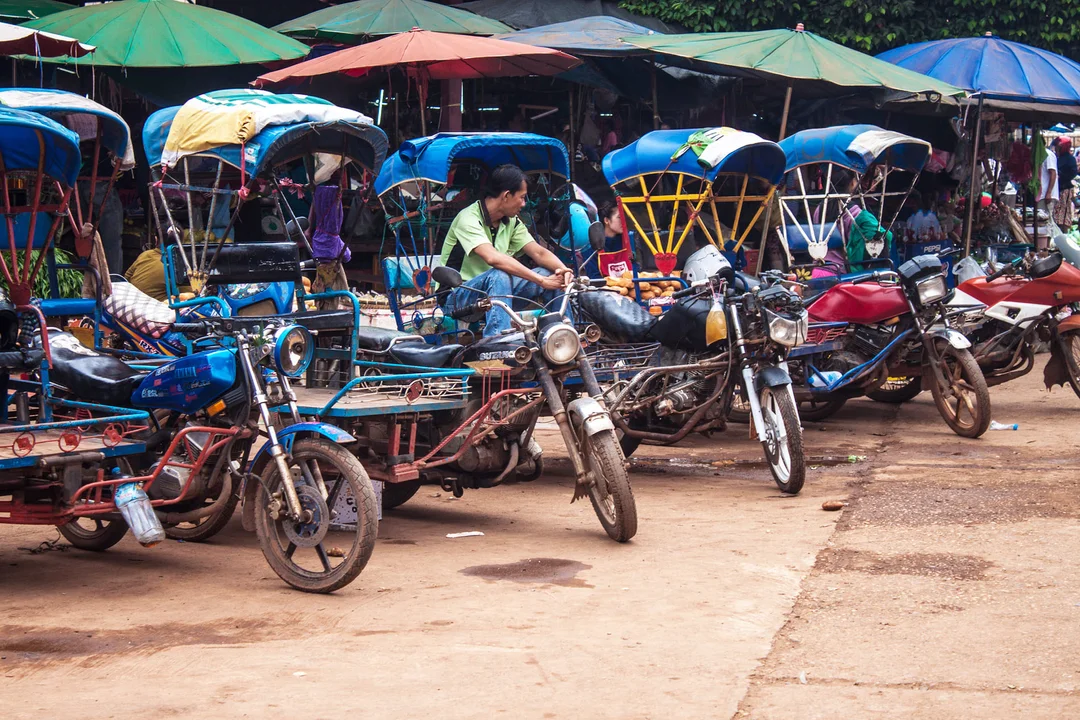Contents
ToggleDiscover the Iconic Tuk-Tuks of Laos
SEO Keywords: Tuk-tuk Laos, Laos transportation, travel in Laos, local transport Laos
In Laos, tuk-tuks aren’t just a means of getting around—they’re a symbol of local life. These colorful, three-wheeled vehicles are a staple in towns and cities across the country, buzzing through markets, side streets, and riverside roads.
Originally inspired by Thai designs, Laotian tuk-tuks have taken on their own unique style. Expect vibrant paint, Lao flags, stickers, and even hand-painted Buddhist symbols. Many are personalized by their drivers, making each one a moving piece of street art.
The name “tuk-tuk” comes from the distinctive chugging sound of their engines—a fitting name for such a quirky ride. Because they’re compact and maneuverable, tuk-tuks can reach places larger vehicles can’t—perfect for exploring hidden alleys, temples, or night markets.
👉 Whether you’re in Vientiane, Luang Prabang, or a rural town, riding a tuk-tuk is part of the authentic Laos experience.
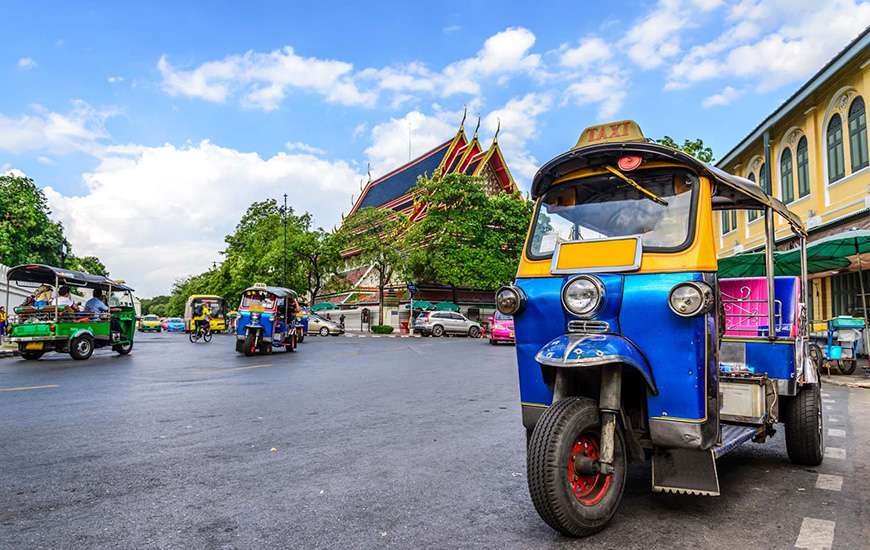
Why Tuk-Tuks Are So Popular in Laos
SEO Keywords: Tuk-tuks in Laos, Laos local transportation, Laos travel tips
Tuk-tuks in Laos are more than just a ride—they’re a vital part of daily life and a symbol of local culture. Their enduring popularity comes from a mix of practical benefits and cultural significance:
✅ Affordable
Tuk-tuks are usually cheaper than taxis and far more accessible than buses, especially in smaller towns.
🚚 Versatile
From carrying groceries and market goods to transporting kids, monks, or even furniture, tuk-tuks are built to handle it all.
🛣️ Flexible
They easily navigate narrow city streets and uneven rural roads, reaching places that larger vehicles can’t.
🎨 Full of Character
Each tuk-tuk is a canvas—decorated with flags, stickers, and local flair, and often reflecting the personality of its driver. Many are even blessed with Buddhist charms for good luck.
Whether you’re heading to a temple, catching a ride to a night market, or simply exploring a new neighborhood, tuk-tuks offer a fun, local way to travel—and a window into Lao life.
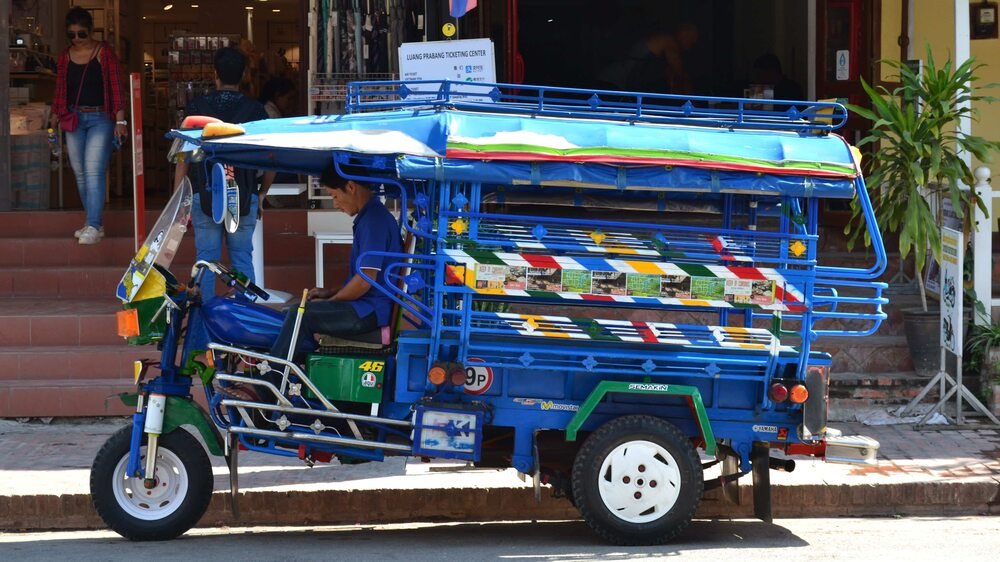
How to Take a Tuk-Tuk in Laos
SEO Keywords: how to take a tuk-tuk in Laos, Laos tuk-tuk tips, local transportation Laos
Tuk-tuks are easy and fun to use—perfect for short trips and local sightseeing. Here’s how to catch one like a pro:
🚖 1. Hail One on the Street
You can wave down a tuk-tuk almost anywhere, especially near markets, guesthouses, bus stations, and temples.
💬 2. Negotiate the Fare
There are no meters, so always agree on a price before the ride.
💡 Tip: Ask your hotel for typical prices to avoid overpaying.
📱 3. Use Ride-Hailing Apps
In larger cities like Vientiane and Luang Prabang, you can use Loca (the Lao ride-hailing app) or Grab for set prices and easier bookings.
👋 4. Talk to Your Driver
Many tuk-tuk drivers are friendly locals with great tips. Don’t hesitate to ask for recommendations—they might point you to a hidden temple, quiet viewpoint, or local eatery you’d otherwise miss.

Practical Tips for Taking Tuk-Tuks in Laos
SEO Keywords: tuk-tuk tips Laos, Laos transportation advice, avoid tuk-tuk scams Laos
Make your tuk-tuk ride smoother and stress-free with these smart tips:
🕒 1. Avoid Peak Traffic Times
In Vientiane and Luang Prabang, traffic can get congested:
🚦 Peak hours: 7:00–9:00 AM and 4:00–7:00 PM
Plan your trips outside these windows if possible.
💵 2. Always Negotiate Upfront
Tuk-tuks don’t have meters, so confirm the fare before the ride begins—especially near tourist hotspots like night markets and temples.
🚫 3. Skip the “Free Ride” Scams
If someone offers a free tuk-tuk ride, it likely includes unwanted detours to souvenir shops or travel agencies. Politely decline.
💰 4. Carry Small Bills
Drivers often don’t have change, so bring small denominations (5,000–20,000 kip) to pay the exact fare.
👂 5. Ask Locals for Price Guidance
Not sure what a fair rate is? Ask your hotel, guesthouse, or a local shopkeeper. This helps you avoid being overcharged and gives you confidence to bargain fairly.

How Much Does a Tuk-Tuk Ride Cost in Laos?
SEO Keywords: tuk-tuk prices Laos, Laos transportation cost, travel budget Laos
Tuk-tuk fares in Laos are negotiated, not metered, so prices can vary depending on location, distance, and your bargaining skills. Here’s a general guide:
🚕 Typical Fare Range
- Short city rides (2–5 km):
15,000–45,000 LAK (€1.50–€4.50)
➤ Common for trips within Vientiane or Luang Prabang - Longer rides or tourist routes:
60,000–90,000 LAK (€6–€9)
➤ Includes temple visits or round trips to attractions - Airport or intercity transfers:
90,000 LAK and up (€9+)
➤ Often fixed rates—confirm before boarding
📌 Pro Tip:
Prices are usually per tuk-tuk, not per person. Share the ride with fellow travelers to split costs and save money!
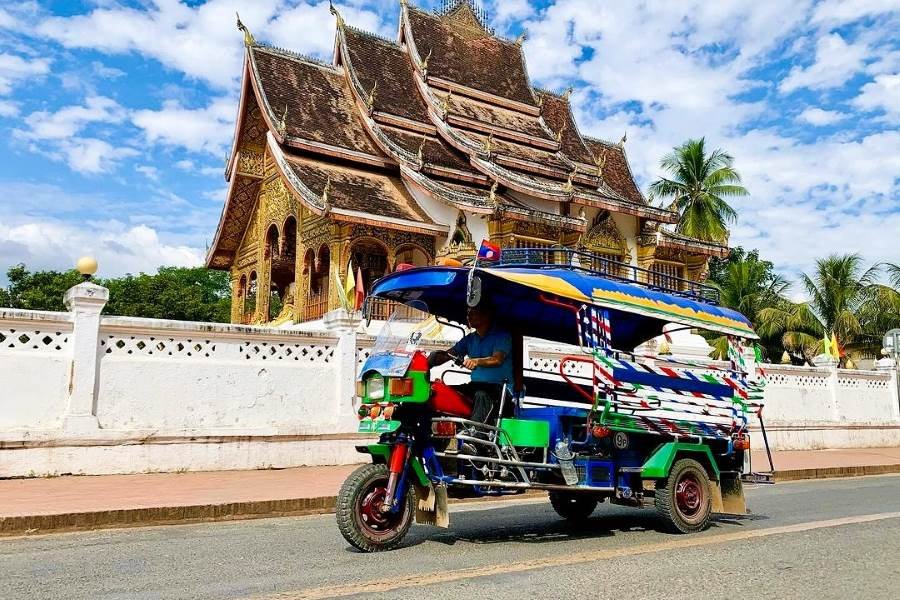
Types of Tuk-Tuks and Traditional Transport in Laos
SEO Keywords: tuk-tuk Laos types, local transport Laos, traditional Lao vehicles
In Laos, the term “tuk-tuk” can refer to a variety of vehicles—each with its own character, purpose, and place in local life. Here’s a breakdown of the most common types you’ll see on your journey:
- Skylab
The classic Lao tuk-tuk.
- 💺 Bench seats, open-air design
- 🎨 Often brightly painted and decorated
- 👥 Can carry up to 8 passengers
- 📍 Common in cities like Vientiane and Luang Prabang
- Jumbo
A compact cousin of the Skylab.
- 🚗 Smaller, lighter, and quieter
- 🤏 Easier to navigate tight alleys or backstreets
- 👥 Fits 2–4 passengers comfortably
- Songtaew
Shared transport for longer routes.
- 🚙 A modified pickup truck with bench seats in the back
- 🛣️ Used for inter-town or rural travel
- 💰 Cheap, but less private and slower
- Samlokang
Motorbike with a sidecar.
- 🏍️ Carries 1–2 passengers
- 🧭 Rare today, mostly found in small towns or border areas
- 🚦 Great for short, scenic rides
- Samlo
The traditional cycle rickshaw.
- 🚲 Human-powered with a rear passenger seat
- 🕰️ A nostalgic relic—now mostly used for tourism or short heritage rides
- 📸 Ideal for a photo-worthy, old-world experience
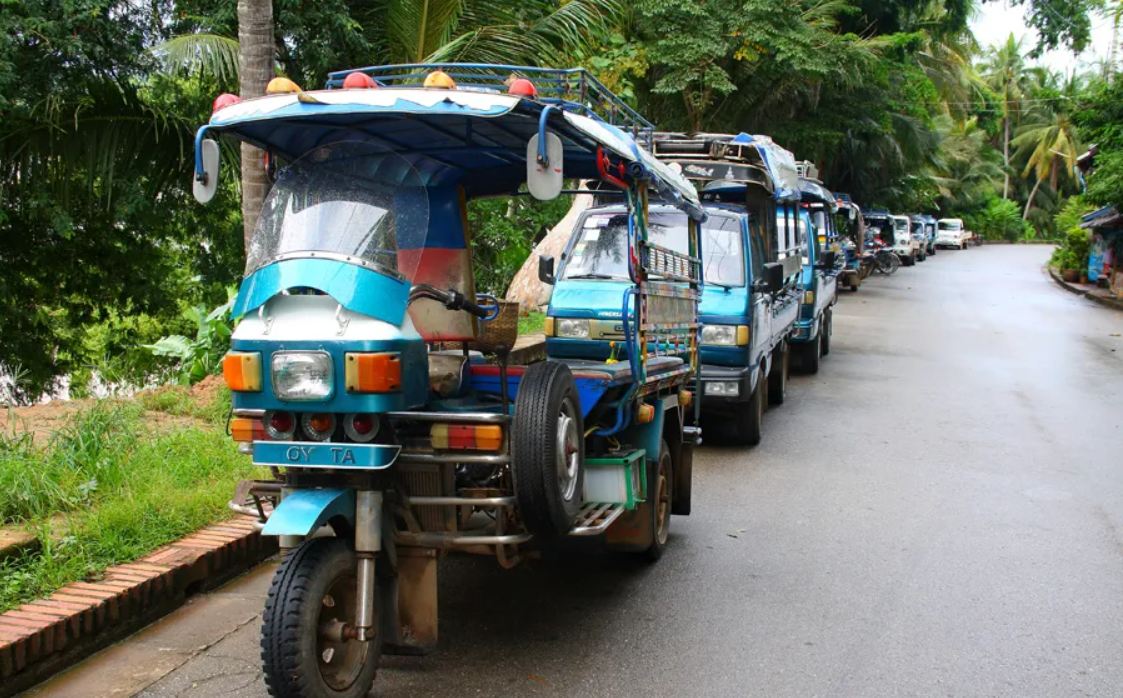
Final Words: Tuk-Tuks as Cultural Icons
Tuk-tuks in Laos are more than quirky rides—they’re a way to engage with everyday Lao life. No matter where you’re headed, riding one invites you to observe street scenes, hear local sounds, and connect with people along the way. It’s a cultural immersion on three wheels.
Next time you’re in Laos, don’t just walk or ride in an air-conditioned van. Hop into a tuk-tuk and feel the heartbeat of the country one bumpy, breezy ride at a time.












